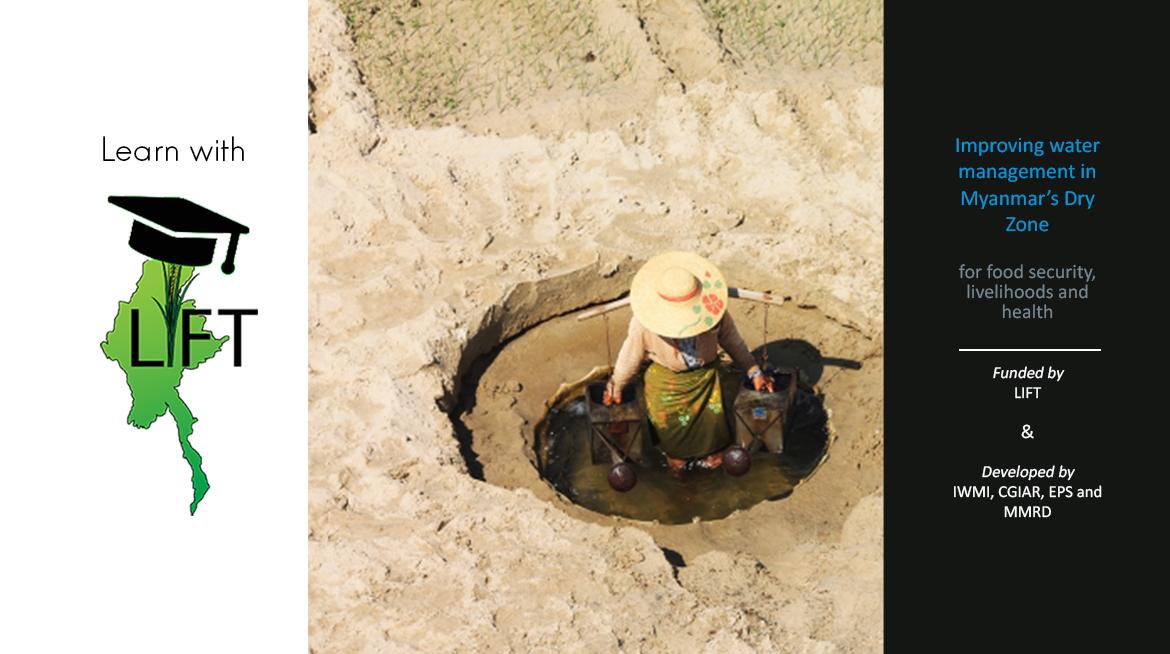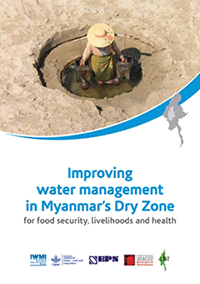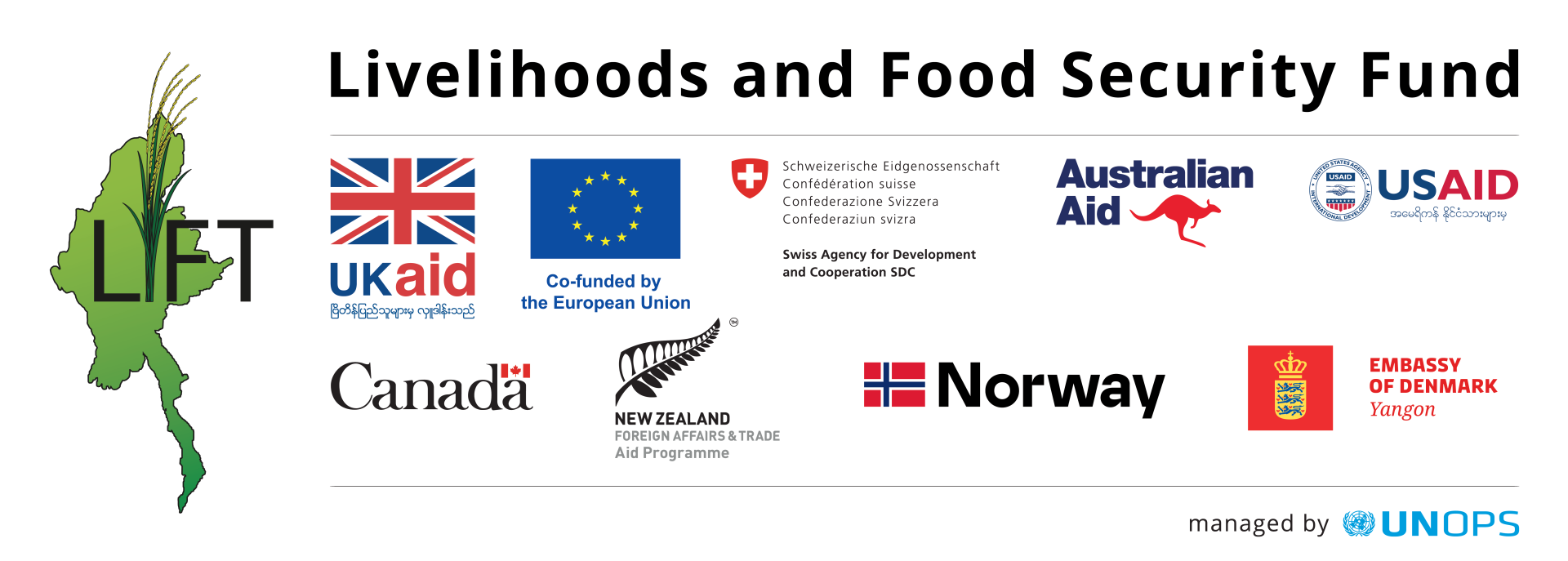
In Tanpinkan Village, Myanmar, U Shwe Myaing takes his recently-acquired family inheritance and uses it to construct a 30 metre well. After years of depending on unpredictable rainfall, Myaing’s decision to invest in groundwater irrigation to water his crops will mean great gains to his harvest and livelihood. Many smallholder farmers like U Shwe Myaing are taking matters of irrigation into their own hands, especially in Myanmar’s Dry Zone, a 75,000km expanse of land home to almost a quarter of Myanmar’s population.
Improving water management in Myanmar’s Dry Zone for food security, livelihoods and health
This is a critical time in the development of agriculture and water management in Myanmar. In a new report, researchers from the International Water Management Institute (IWMI) delineate the importance of effective water management in Myanmar’s central Dry Zone. As Myanmar opens the discussion on agriculture irrigation and water management, evidence-based research that government officials and development agencies can use to make important decisions regarding national strategies or donor investments is highly necessary.  As such, LIFT commissioned IWMI with National Engineering and Planning Services (NEPS) and Myanmar Marketing Research and Development (MMRD) Research Services to conduct a review of access to and management of water resources in the Dry Zone.
As such, LIFT commissioned IWMI with National Engineering and Planning Services (NEPS) and Myanmar Marketing Research and Development (MMRD) Research Services to conduct a review of access to and management of water resources in the Dry Zone.
Assessing water resources in Myanmar’s Dry Zone
Much of the prevailing poverty and food insecurity in the central Dry Zone is due to variability in water resources and insufficient water management.  The IWMI study contains three parts:
The IWMI study contains three parts:
- Assessment of groundwater and surface water resources in the Dry Zone
- A community level survey to evaluate water resource access and management for local communities
- Analysis of existing irrigation programmes, investment outcomes and recommendations to improve access to, and management of water resources in the Dry Zone
Key Findings
Due to the Dry Zone’s variability of environments, farming systems, water access, and irrigation infrastructure, the report recognised that rather than a single blanket solution, water-related interventions must be tailored to specific needs. The study identified the following five key areas to better understand the impact of irrigation on incomes and livelihood and to target investments in agricultural water management in the Dry Zone:
1. Formal irrigation is underperforming
There is significant scope for improving irrigation and crop water productivity. Despite efforts to expand irrigation, the efficiency of existing irrigation systems is very low, with only five per cent of water transpired by crops. IWMI researchers identified the need to review water and energy productivity of existing irrigation schemes before undertaking major programmes.
2. Groundwater is a critical but limited resource
Although information on groundwater is sparse, current data suggest that the Dry Zone has moderate levels of groundwater. There is a widespread view that groundwater reserves in the Dry Zone are vast and largely untapped; however, the hydrogeology of the Dry Zone is complex and little is yet known of the groundwater system. Supporting the sustainable development of groundwater using tube wells can secure villages and provide small-scale irrigation.
3. Small-scale water management technologies bring benefits
The unpredictability and variability of rainfall threaten agricultural productions by increasing risk of drought. Communities use farmer-managed technologies, such as rainwater harvesting and small-scale pumping, reduce risks associated with climate variability and increase incomes. Researchers suggest investing in improved design and maintaining small reservoirs for rainwater harvesting.
4. We need to put soil and water conservation into action
Soil erosion and land degradation are widespread in the Dry Zone. Techniques to reduce erosion enhance water retention in the soil and increase the effectiveness of rainfall. Employing traditional Soil and Water (SWC) practices in the Dry Zone could help retain water in the landscape. Despite the importance of SWC, famers often fail to implement even traditional approaches. SWC approaches should be promoted and used to repair, revitalize and protect.
5. We need Information for planning and managing water resources
Achieving water security requires investment in water infrastructure and the institutions needed to manage water effectively. A coordinated development strategy is needed to guide future investments in water resources management.

Next Steps
Recently, significant progress have been made in water resources planning in Myanmar. In December 2014, the World Bank announced a USD 100 million donation for the Ayeyarwady Integrated River Basin Management Project (AIRBMP) to strengthen water resources management and planning, and enable informed decisions about future investments. In 2015, the Myanmar Integrated Water Resources Management Strategic Study proposed a national master plan on water management.
Together with these projects, the results from Improving water management in Myanmar’s Dry Zone for food security, livelihoods, and health can give a comprehensive look at the state of Myanmar’s water management. If current projects and recommended solutions are implemented successfully, Myanmar will be better equipped to increase agricultural production, reduce poverty, and improve livelihoods.
Read the report:
International Water Management Institute (IWMI). 2015. Improving water management in Myanmar’s dry zone for food security, livelihoods and health. Colombo, Sri Lanka: International Water Management Institute (IWMI). 52p. doi: 10.5337/2015.213


